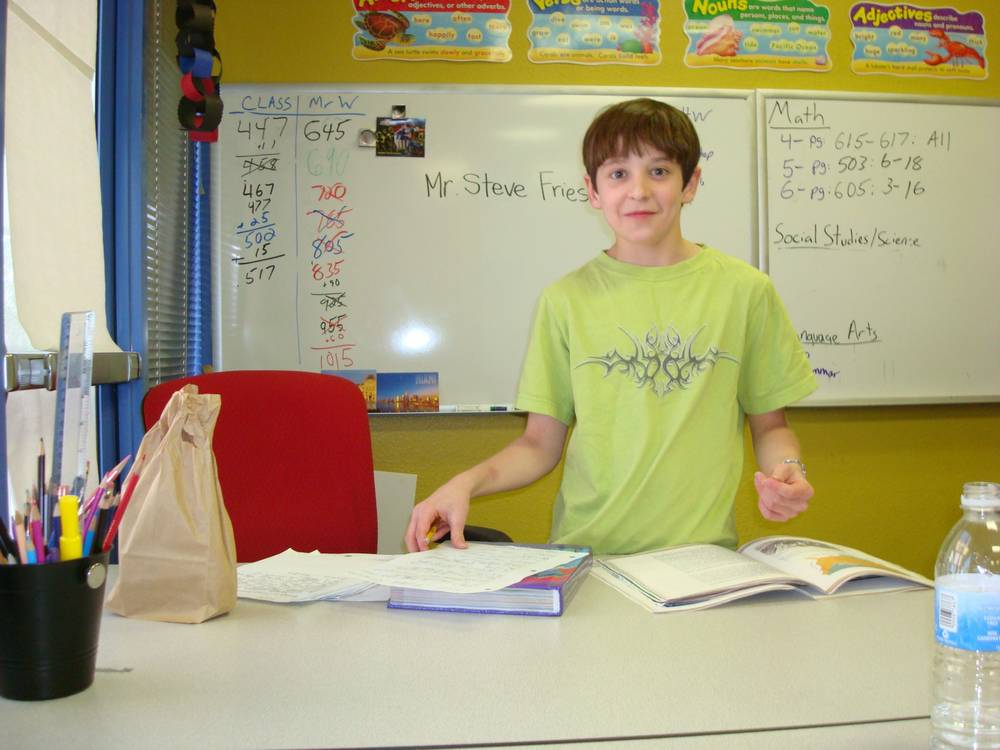Back when I first arrived in this city in 1996 to cover public education for the Review-Journal, the very notion of schools and Vegas elicited sardonic guffaws from people I knew in other cities.
They mocked the notion of children growing up in the shadow of Sin City and actually asked whether there were classrooms inside the casinos.
In the subsequent years, I’d learn that there are, in fact, very serious problems with the schools in Clark County. Beyond the abysmal test scores and high dropout rates, I’d discover trying to teach journalism at UNLV that a great number of students who earn Millennium Scholarships from the state for graduating with a B average are, nonetheless, functionally illiterate.
What I didn’t expect was to discover the ideal classroom—the answer to all these woes—on, of all places, the Las Vegas Strip.
More
Head to ReadVegas.com to read Steve Friess’ daily blog, Vegas Happens Here, or catch his weekly celeb-interview podcast, The Strip.
Okay, technically, the ideal classroom is off the Strip, just south of McCarran Airport in a small, yellow-walled room overflowing with books and art projects and, most important of all, a sort of happiness and earnestness that accompanies real learning.
And the half-dozen boys who attend this school get to do so because they are full-time performers in Cirque du Soleil’s Beatles-scored production Love at the Mirage. In other words, they owe the very existence of the Strip a debt of gratitude.
Their teacher, Andrew Wright, is a full-time employee of Cirque as well. The Canadian entertainment conglomerate had to find some way to educate the boys who appear as stand-ins for Liverpool’s Fab Four and through whose eyes much of the story is told. So they decided to hire a full-time teacher, have the students attend class in a dedicated room at their Resident Show Division headquarters off Sunset Road and rely on the Clark County School District solely for general curricular guidance and textbooks.
As a result, these boys, who range in age from 10 to 12 and are in grades fourth, fifth and sixth, enjoy a level of attention from Wright, who customizes lessons to their grade and ability levels, that public school children can never expect.
The boys attend school three afternoon hours a day on days when the show is on. That means they go to school on Saturdays and Sundays, but no one seems to much mind. After their instruction, they head off to the Mirage to get into makeup and prepare for their performances. The makeup never really comes off all the way; some of the kids attended school the Sunday I was there with stubborn red paint on their elbows.
Wright, a former Decker Elementary School teacher, is constantly amazed by the creativity level of the kids. It’s not unusual for a creative writing assignment to be turned in at book length. “They could sell some of their ideas for movies,” he marvels. And there are Cirque touches to the assignments; one enrichment exercise involved each boy giving an oral report about a different show, and a map in the classroom features pins identifying where in the world the touring productions are right now.
The school is unique in Las Vegas, where, despite the huge entertainment industry, there aren’t a whole lot of children who are full-time performers. Anita Wilbur, the principal of CCSD’s Academy For Individualized Studies, which oversees students like this, noted that the only other full-time child performer on the Strip that she could think of is the daughter of Gregory Popovich; she’s in his animal-tricks show at Planet Hollywood. Anastasia Popovich, however, is one of the many students under Wilbur’s umbrella whose schooling is comprised of reading textbooks and taking tests.
Cirque, responsible for educating so many children, opted to hire a full-time teacher, something the company also does for child actors and children of performers in their touring productions around the world.
Kyle Stokely, 12, seems to be well aware of how lucky he is to be getting this education. He’s been in Love since its June 2006 opening, but will have to leave the cast—and the class—in December because he’s growing too tall for the role. He is anguished, not only because he loves being in the show but also because he’ll probably end up in a public school. “You learn a lot more a lot quicker than kids who are in a class with 35 other kids,” Kyle says.
Certainly, there are downsides to this arrangement. Myro Khetaguri, whose father is a Kà acrobat as well and who has performed with Cirque on the touring production of Alegría, is eager to leave the show and go to a normal school. “I’m asking my mom if I can join the fall soccer team,” he says. None of these kids can play in sports leagues, both because of the time conflict with their Cirque duties and also because they have a contract that prohibits them from risking physical injury.
But mostly, this appears to be the answer to the question of what ails public education. Wright believes—and I believe him—that he could take any six kids from any CCSD school and get better results if they could attend a school like this.
“One of the biggest things that hurts public schools is the sheer numbers,” Wright says. “You have one teacher and 34 kids and a huge array of abilities and language disabilities. Someone’s always going to suffer one way or the other. Maybe it’s the very intelligent child who could be way up there if only he were being pushed, but the teacher is not able to push him all the time, or the other student who’s way behind and needs all the teacher’s attention but couldn’t possibly get it.”
Wilbur calls the Cirque set-up “a dream situation” and noted that “you can’t find a private school like that in this town. They’re a large corporation. School districts have budget cuts, remember?”
Oh yeah. Hard to forget. But the next time you hear that “throwing money” at public education isn’t the answer, remember these kids. Actually, it is the answer. We just don’t have the political will to do it.








Previous Discussion: